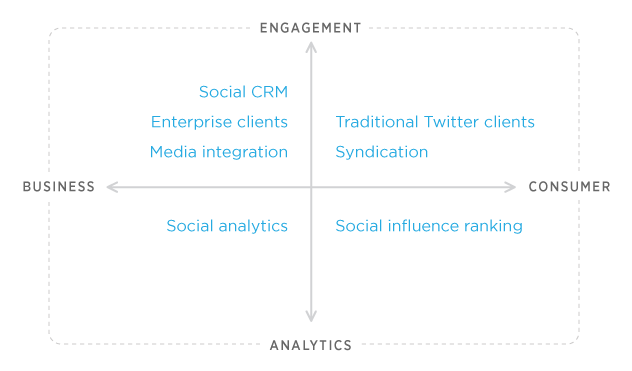In addition to being a guest in today’s comic, Michael Sippey is the Director of Consumer Product at Twitter.
He’s also the author of a post over at the Twitter Developer Blog that you may have already heard about: Changes coming in Version 1.1 of the Twitter API.
In it, Michael reveals that Twitter is really tired of people using other (better) “traditional” Twitter clients instead of their own website and apps, and that they’re going to be making it a lot harder for those to exist in the future. Between changing Display Guidelines to Display Requirements, sharply limiting the amount of client tokens a client app can serve and requiring such client apps to go to Twitter to “work together”, it’s apparent that Twitter is continuing its campaign to shut “traditional” Twitter clients down.
I wish I could feign surprise, but the fact is that such ungrateful, brutish behavior has become the norm for social media companies. First they rely on third party developers to make their service more popular by extending functionality and drawing in users while the service is fragile and young. Then they steal those features for their native experience. Lastly they eventually shut down the third party clients to force their service’s users back into the native client so they can cram ads down their throats.
It’s the way of the web. It shouldn’t be, and I’d love to see some other model come to dominate the space, but at present I’m only ever shocked when a popular web-based service doesn’t screw over the partners that helped them get to where they are.
There’s a different level of dick behavior that I’d like to address, however. It’s how Twitter is using this dicking of their developer “partners” to further dick their users.
In his post, Michael encouraged developers to move away from the traditional client apps and towards other types of applications with the following chart:

This chart has four quadrants. The upper right one, which contains virtually any app that you, I or any other user of the Twitter service would typically use, is what they’d prefer developers to shy away from. The other three, which turn the users into products, are what they want to see more developer engagement with.
Let’s let that sink in. They want developers to focus on turning us into products.
This isn’t a shock. After all, ever since the advent of advertisements we users of a given service have been little more than eyeballs that can be sold in everything from newspapers to television networks that specialize in shows featuring orange midgets copulating in hot tubs.
Ultimately I’m aware that Twitter needs to make money. Which, when your whole service is letting people blather about the contents of their breakfast for free, is a bit of a challenge. So I get it (but don’t like it) when promoted tweets end up in my Twitter stream.
But to me there’s a stark difference between feeding themselves and encouraging an entire ecosystem to become a bunch of frenzied human-eating services that exist not to serve the user experience, but instead to transform users into a product for companies to exploit and consume.
Apparently “Director of Consumer Product” means exactly what it sounds like. It turns people into product.
I’ve been pondering (without any success) how web services that don’t sell products (whether physical like toilet paper or digital like MP3s) are supposed to make income without putting their users through the wood chipper and selling them on a platter to interested parties. I’m thinking that Kickstarter is pointing in the right direction (consider Penny Arcade’s Kickstarter project to get their ads off their site). But just because I don’t have a solution yet doesn’t mean that I like the status quo, and I think it’s a major step backwards in consumer relations for Twitter to be essentially forbidding its developers from building any product with their API that actually serves to us, instead of serving us up.
Am I quitting Twitter? No. Too much of my personal social ecosystem is currently on that platform, and for better or worse I’m going to continue to play the role of Internet chum for the circling marketing sharks until something better comes along (I know, I’m too late for a timely Shark Week reference). But when a better option does come along, there’s a good chance I’ll jump if it looks like it will get traction. And any plans I had on building any Twitter API-based projects are going the way of the dodo.
Bad form, Twitter.


